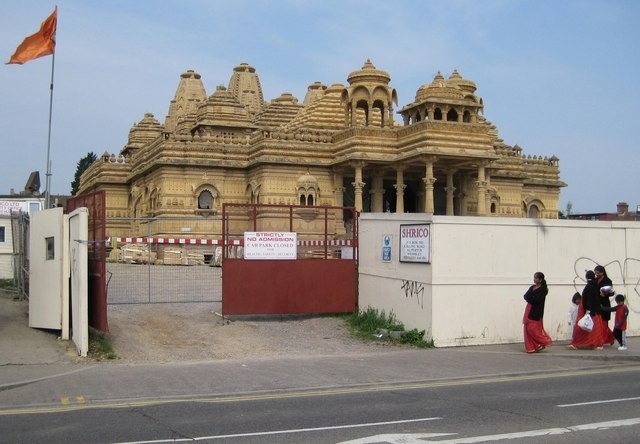Wembley: London’s Spice Trail of India.

Part of a series of women-led tours, groups explore Wembley’s Ealing Road, visiting shops, cafes, restaurants, and the magnificent Hindu temple.
Bright-robed statues of 41 deities adorned with garlands observe us as we silently tread through countless intricate archways, surrounded by the scent of sandalwood and jasmine. Under the ornate central dome, a mirrored table reflects rings of dancing figures. The Shri Sanatan Hindu temple, inaugurated in 2010 on Ealing Road, offers a captivating glimpse of North India amidst the grey suburbs of London. Hand-carved in Gujarat, the walls and over 200 limestone pillars showcase depictions of birds, animals, and scenes from Hindu scripture.
Living four miles away in Harrow, Vaishali Patel has guided our group to the temple as part of a recently launched tour celebrating the vibrant colors, tastes, and textiles of Wembley’s Indian community. She developed this half-day experience after completing a course with The Tour Guiding Academy, a training program facilitated by the social enterprise Women in Travel. It’s among the expanding range of women-led local tours in London.
For both visitors and London residents unfamiliar with it, Ealing Road serves as a low-carbon gateway to an alternate world.
Our next destination in Wembley is a paan kiosk located inside a launderette, offering the opportunity to taste these packets of dried coconut and sugar-coated aniseed wrapped in betel leaves. The pavement outside bears brick-red splashes, evidence of people spitting out their paan after chewing. Having spent almost four years in Delhi – where my youngest child was born – Ealing Road instantly transports me back. While it may be a place taken for granted by locals as a place for worship and shopping, for visitors or London residents unfamiliar with it, the area serves as a low-carbon gateway to a parallel world.
Vaishali reminisces, “As a child, my mum and I would take the bus to come here to buy fruit and vegetables.” She seamlessly weaves in stories from her personal experiences with background information. Continuing our walk, we pass by greengrocers showcasing piles of chillies, papayas, and fresh coriander until we reach the gleaming Ambala sweet shop. There, stacks of syrupy jalebis and creamy slabs of confectionery, including cashew marzipan, green pistachio barfi, and rich fig and carrot halwas, await.
At Joshi fabric shop, just a few doors down, our sensory journey delves into a corridor of vibrant colors, featuring silks, brocade, iridescent organza, crushed velvet, lace, and glittering three-tone disco jersey. The contrast with the chilly drizzle outside couldn’t be more striking. The narrow shop is adorned with rolls of gold and magenta, deep blue, chemical orange, and earthy maroon. Beyond the prismatic satin and ombré chiffon, smaller shelves display sequins, mirrorwork, embroidered ribbons, and glinting diamante. One box bears the label “Mostly peacocks.” Here, we gain insights into the art of pleating saris, bandhani tie-dying from western India, and the owner’s family history. Similar to many in the area, Bina Joshi’s parents and grandparents embarked on journeys by boat and plane from Gujarat through East Africa, escaping droughts and subsequent persecution.
At Sakoni’s, we indulge in crispy bhajiya, mixed chaat with tangy-sweet tamarind, a South Indian dosa pancake, and mogo chips.
Vaishali’s tour also encompasses a garland-strung gift store filled with miniature Ganesh fountains and the strains of sitar music, concluding with Indian street food and spicy masala chai at Sakoni’s restaurant. Here, we savor crispy bhajiya, mixed chaat with tangy-sweet tamarind, a South Indian dosa pancake, and mogo (cassava) chips, serving as a reminder of the area’s East African connections.
In her book “Solo Explorers,” a compilation of 30 accounts by women detailing transformative journeys, Vaishali explores how travel fosters an appreciation for humanity and allows us to “disconnect from daily routines that often keep us trapped in what we know.” Her tour achieves similar effects in just three hours on one suburban street. It feels as though I’ve been on holiday, returning with a more enriched perspective of London.


